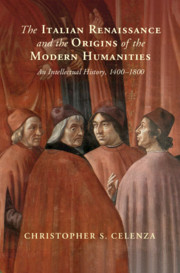Refine search
Actions for selected content:
13 results
1 - Staging Sentimentality
-
- Book:
- Romantic Music Aesthetics
- Published online:
- 22 November 2024
- Print publication:
- 21 November 2024, pp 26-49
-
- Chapter
- Export citation
Chapter 27 - France
- from Part V - World Cultures Inspiration and Reception
-
-
- Book:
- Goethe in Context
- Published online:
- 16 May 2024
- Print publication:
- 23 May 2024, pp 263-271
-
- Chapter
- Export citation
Comment choisir son camp. Interroger l'expérience et évaluer les hypothèses dans la Lettre sur les aveugles de Diderot
-
- Journal:
- Dialogue: Canadian Philosophical Review / Revue canadienne de philosophie / Volume 63 / Issue 1 / April 2024
- Published online by Cambridge University Press:
- 02 April 2024, pp. 147-168
-
- Article
-
- You have access
- HTML
- Export citation
3 - Diderot’s Conjectural History and the History of “Monstrous Nature”
-
-
- Book:
- Cosmopolitanism and the Enlightenment
- Published online:
- 16 March 2023
- Print publication:
- 23 March 2023, pp 91-111
-
- Chapter
- Export citation

The Italian Renaissance and the Origins of the Modern Humanities
- An Intellectual History, 1400–1800
-
- Published online:
- 09 November 2021
- Print publication:
- 09 September 2021
6 - Shaping Knowledge
-
- Book:
- The Italian Renaissance and the Origins of the Modern Humanities
- Published online:
- 09 November 2021
- Print publication:
- 09 September 2021, pp 128-157
-
- Chapter
- Export citation
2 - Lorenzo Valla, Philology, Emotion
-
- Book:
- The Italian Renaissance and the Origins of the Modern Humanities
- Published online:
- 09 November 2021
- Print publication:
- 09 September 2021, pp 20-64
-
- Chapter
- Export citation
9 - Echoes
-
- Book:
- The Italian Renaissance and the Origins of the Modern Humanities
- Published online:
- 09 November 2021
- Print publication:
- 09 September 2021, pp 246-272
-
- Chapter
- Export citation
9 - The Fiction of Diderot and Rousseau
- from Part II - The Eighteenth Century: Learning, Letters, Libertinage
-
-
- Book:
- The Cambridge History of the Novel in French
- Published online:
- 04 February 2021
- Print publication:
- 25 February 2021, pp 170-186
-
- Chapter
- Export citation
Chapter 5 - Actors and Intellectuals in the Enlightenment Era
-
- Book:
- The Players' Advice to Hamlet
- Published online:
- 16 January 2020
- Print publication:
- 06 February 2020, pp 140-177
-
- Chapter
- Export citation
4 - Tone
-
- Book:
- Instrumental Music in an Age of Sociability
- Published online:
- 19 September 2019
- Print publication:
- 10 October 2019, pp 428-514
-
- Chapter
- Export citation
Diderot, l’éclectisme et l’histoire de l’esprit humain
-
- Journal:
- Dialogue: Canadian Philosophical Review / Revue canadienne de philosophie / Volume 57 / Issue 4 / December 2018
- Published online by Cambridge University Press:
- 03 January 2019, pp. 719-743
-
- Article
- Export citation
Critique des systèmes et antimathématisme au XVIIIe siècle
-
- Journal:
- Dialogue: Canadian Philosophical Review / Revue canadienne de philosophie / Volume 57 / Issue 4 / December 2018
- Published online by Cambridge University Press:
- 03 January 2019, pp. 813-832
-
- Article
- Export citation
